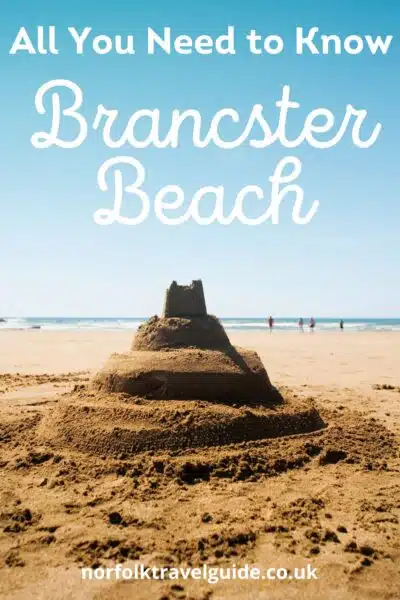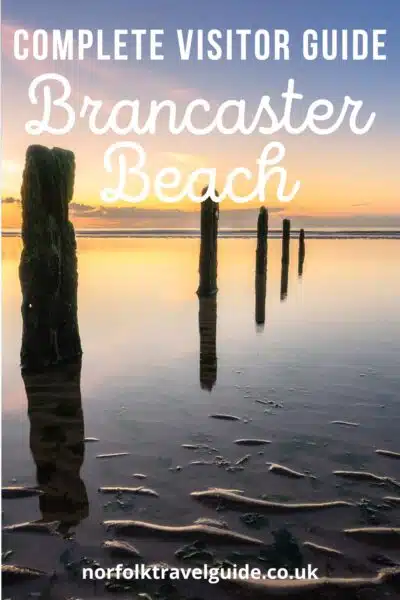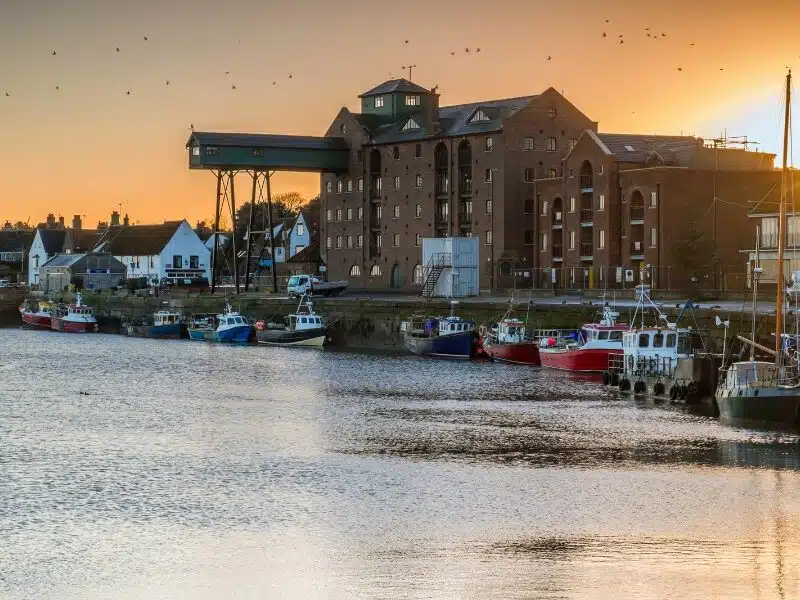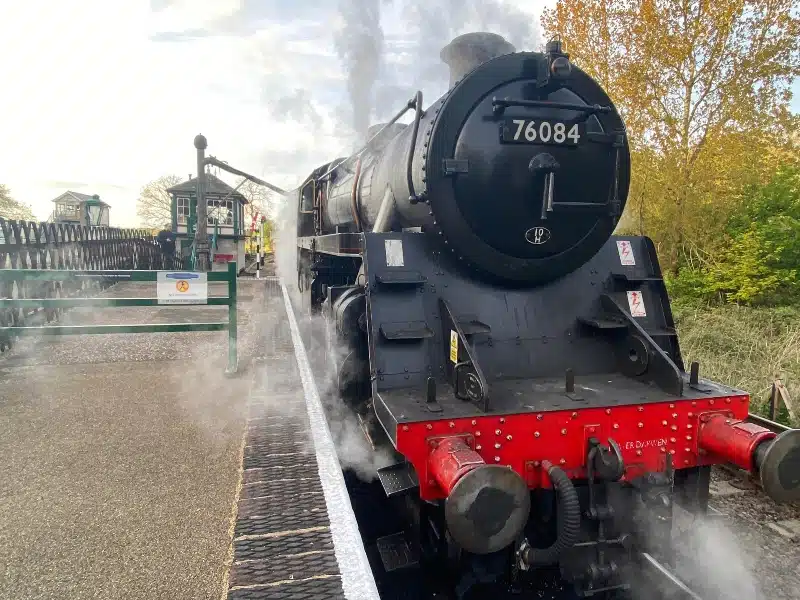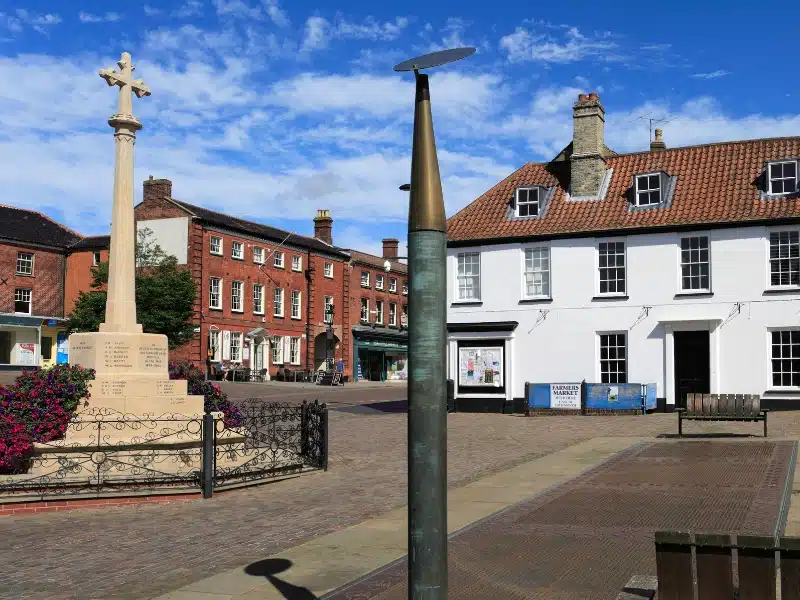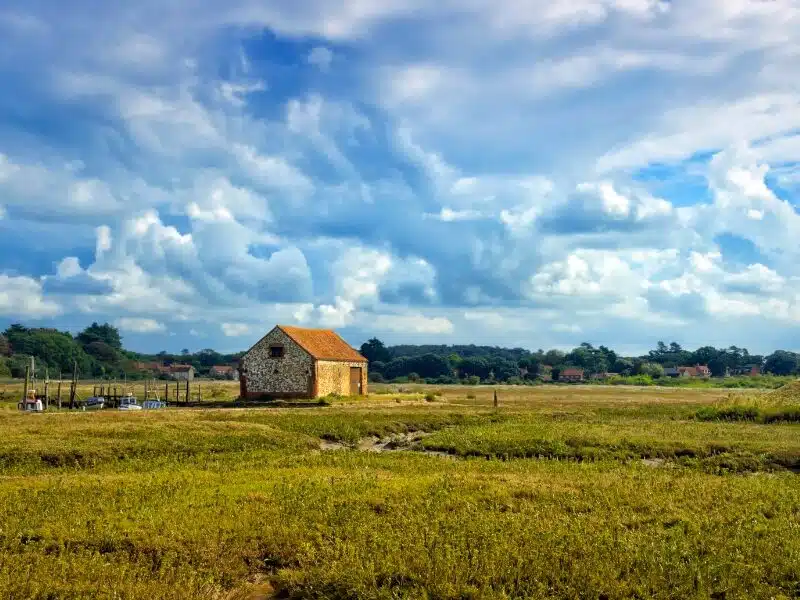In an area of outstanding natural beauty on the North Norfolk coast, Brancaster beach is a vast stretch of soft golden sand. Sandwiched between Titchwell Marsh and Scolt Head Island, Brancaster beach is as wild and windswept as they come!
Managed by the National Trust, Brancaster is where the kite flyers and dog walkers come, and where families play games on the sands before flopping in the dunes for a picnic lunch. It’s where I learnt to fly a stunt kite as a teenager!
My local’s guide to Brancaster beach has all the information you need to make the most of your Norfolk beach holiday, and enjoy this special place.
RELATED POST: The Ultimate Local’s Guide to Norfolk England
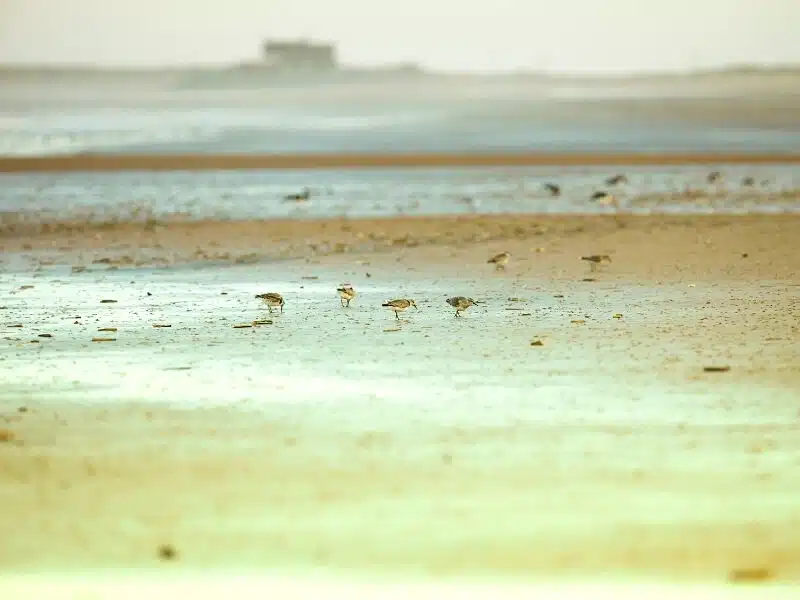
This post may contain affiliate links. If you book something I recommend, I make a small commission without affecting the price you pay!
Where is Brancaster Beach?
Brancaster beach, or “Branny” as it’s known locally, is nestled between the beaches of Thornham and Burnham Overy Staithe and lies 25 miles along the A149 coast road from King’s Lynn, and 43 miles from Norfolk’s capital city of Norwich.
Brancaster beach lies a mile north small village of Brancaster, where there is a church and The Ship pub. The civil parish of Brancaster comprises Brancaster itself, together with Brancaster Staithe and Burnham Deepdale.
The beach is backed to the west by RSPB Titchwell Marsh and to the east by the network of small canals and dykes of Mow Creek.
RELATED POST: North Norfolk Coast – 19 Unmissable Highlights
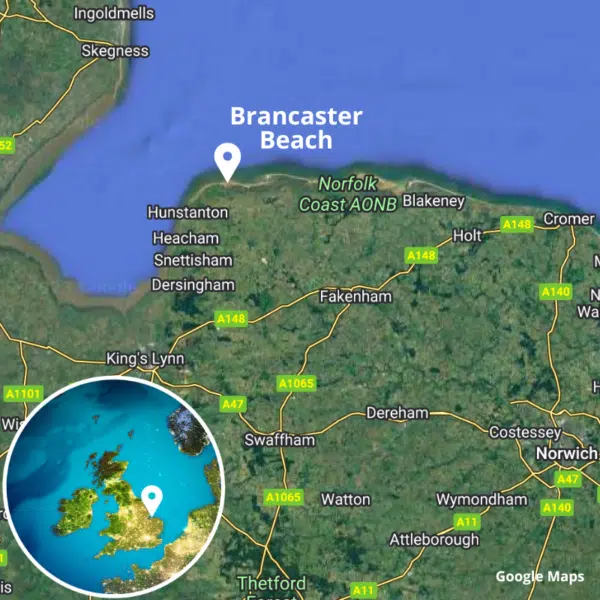
Getting to Brancaster Beach
Driving to Brancaster Norfolk
If you’re travelling from the north of the United Kingdom, pick up the A17 south at Newark-on-Trent and follow the route around the Wash to King’s Lynn. This road is mainly single-carriageway, and slow-moving agricultural traffic and trucks can cause delays, so build this into your travel plans.
If you’re travelling from the Midlands, you’ll come into Norfolk via Peterborough and pick up the A47 north and east to King’s Lynn. From the south, the A10 brings you through Cambridge directly to King’s Lynn.
From King’s Lynn, which is well worth a stop on the way through, either pick up the A149 coast road to Brancaster or go cross-country via Docking and the B1153. Once in Brancaster village, pick up Broad Lane (just before St Mary’s Church), which becomes Beach Road, at the end of which is Brancaster beach car park.
Brancaster beach postcode is PE31 8BW.
RELATED POST: All the Best Things To Do in King’s Lynn Norfolk
Getting to Brancaster by Public Transport
The county of Norfolk is within easy reach of the rest of the UK, with great transport links. You can get to the West Norfolk town of King’s Lynn by mainline train from London in less than two hours. Simply take the regular Greater Anglia service from London King’s Cross, which leaves every hour or so.
Alternatively, you can take a National Express coach from Victoria Coach Station to King’s Lynn. This takes around 6.5 hours depending on the time of day, and you do need to change at Norwich, but it’s often much cheaper than the train, especially when booked in advance.
At King’s Lynn train station get the CoastLiner 36 bus from the Transport Interchange next door, and get off at The Ship bus stop an hour later. From here it’s a fifteen minute walk to Brancaster beach.
If you’re planning a visit from elsewhere, you can explore the Norfolk coast on the CoastHopper from Cromer and Sheringham, which connects with the CoastLiner bus, and Sheringham is connected to Norwich via the Greater Anglia train service.
RELATED POST: 21 Of The Best Things To Do in Cromer Norfolk
Brancaster Beach Car Parking
The Brancaster beach parking lot at the end of Beach Road is owned by the Royal West Norfolk Golf Club and can accommodate up to 450 cars.
There is a toilet block on the opposite side of the road, and a beach kiosk (open from March to November) which sells beach toys, hot and cold drinks, ice creams and snacks.
The road to Brancaster beach car park can flood at high tide, and the water is usually too deep for cars to pass. Use the RWNGC website to check for the best time to visit, and plan to arrive before high tide and leave at low tide, meaning you get the whole day on the beach.
Brancaster beach parking charges are £5 for two hours and £9 for the day in summer. It’s £3 for two hours and £5 for the day in winter. There is a pay and display machine which takes cash, contactless and cards, and you can also use the flowbird app.
On busy days, the car park can fill quickly, and the Brancaster Parking and Safety Team will open overflow car parking in the village, and signage will be displayed. Please do not park on pavements, verges and driveways in the village, as this creates reduced visibility and danger to other road users and pedestrians, not to mention frustrating local residents.
When it’s been raining, the car park sand turns into orange mud and can get everywhere! Take a spare pair of shoes or boots for when you return to the car.
RELATED POST: Norfolk Beaches – Ultimate A-Z Guide
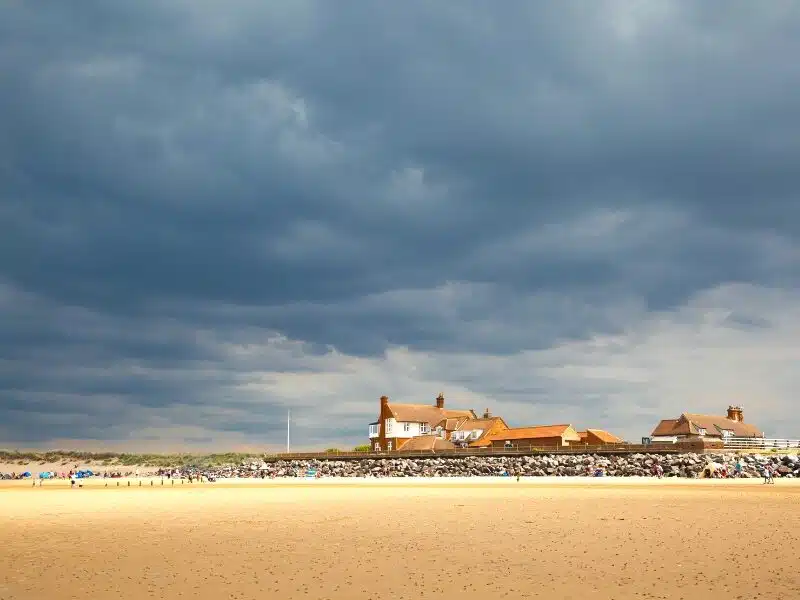
Brancaster Beach Weather
If you’re visiting Brancaster for a holiday or short break, the months of July and August offer the highest temperatures, averaging between 20-26°C (68-79°F), with around nine hours of sunshine a day.
The chances are there will be a breeze on the beach, as is normal for Norfolk, and you should be prepared for the odd shower or two. Although East Anglia is the driest part of the UK, it has been known to rain unexpectedly – this is England after all!
RELATED POST: 26 Pictures of Norfolk England to Inspire Your Trip!
Is Brancaster Beach Dog Friendly?
Brancaster is very dog friendly, and the National Trust, who manage the beach, say it’s a two-pawprint-rated place. This means there are water bowls and dog bins available at the entrance to the beach.
Between May and September, there is a fenced-off dog-free zone at the eastern end of the beach (to the left of the entrance).
If you are near this area, please follow the signs and keep your dogs on a lead as protected nesting birds can be found here and it’s a criminal offence to disturb them.
Otherwise, the whole expanse of the beach is available for dogs to run around, splash in the sea, meet other four-legged friends and enjoy walks with their owners.
RELATED POST: Dog Friendly Beaches Norfolk: The Best for Unleashed Fun!
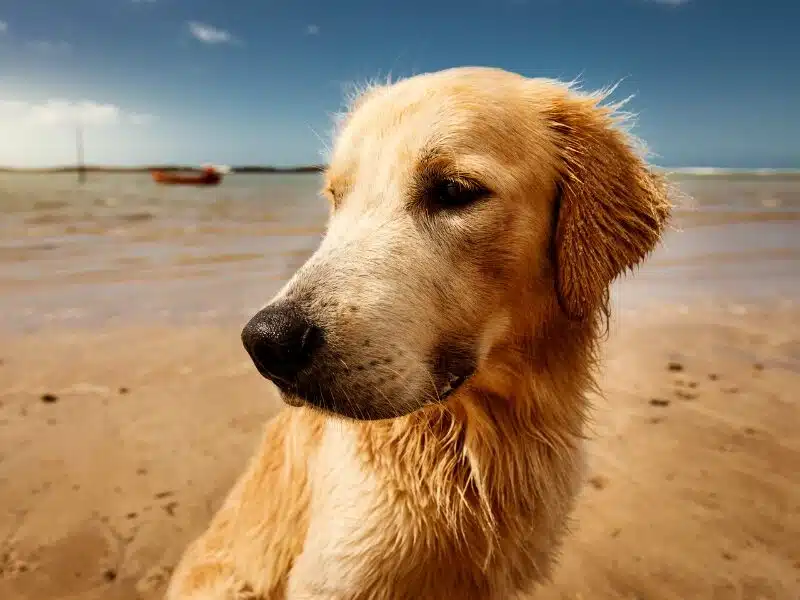
Is Brancaster Beach Safe for Kids?
Brancaster beach is popular, although it never feels crowded, and the beach itself is a quick walk from the car park, unlike Holkham beach just up the coast, where the walk can take 20 minutes or more!
The beach is very shallow and hundreds of meters of sand are exposed at low tide. Kids love this perfect sandcastle-building sand, which is firm enough for even the most active of beach games.
The natural and unspoiled dunes provide privacy, shelter and a useful windbreak, making them an ideal spot for a picnic lunch or a lazy afternoon in the sun with a good book.
Swimming in the sea is safe, but there is no lifeguard at Brancaster beach, so children should only swim with adults supervising, and the use of inflatables is not advised.
RELATED POST: 30 of the Very Best Things To Do in Norfolk
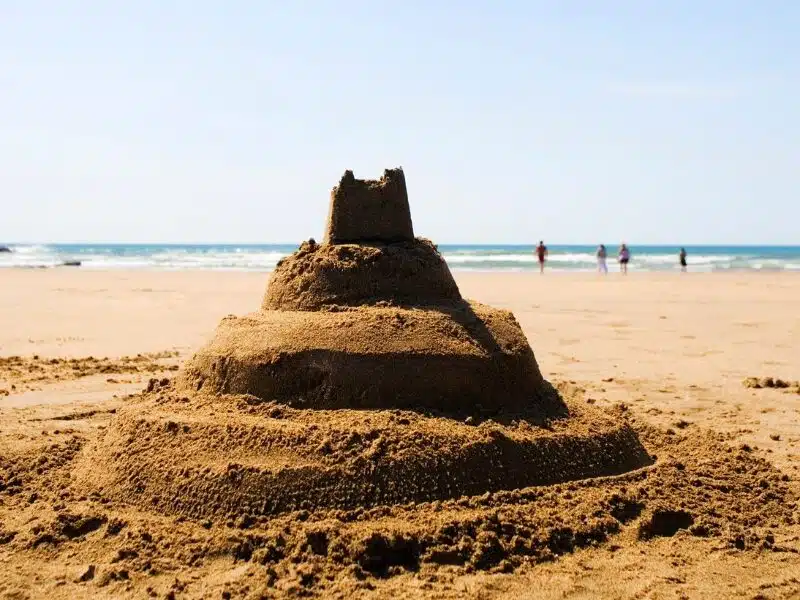
Tides at Brancaster Beach
The tide at Brancaster comes in quickly, filling the low points between sandbanks and cutting them off from the land.
Every year, the RNLI from Hunstanton and Wells rescue unwary beachgoers who get stranded as the tide comes in and fills the hidden channels with a strong current, which can easily sweep people out to sea.
Please read the warning notices at the beach and be aware of Brancaster beach tide times when visiting.
RELATED POST: Wells-next-the-Sea Visitor Guide
Arriving at Brancaster Beach
As you arrive at Brancaster beach, you’ll see the huge rocks of the man-made sea defences to the east and west. On your left, this wall wraps around the Brancaster golf club clubhouse and the 9th green, and on your right, it only extends for a short way before it’s submerged in the drifting sands of the dunes.
In both directions, the sandy beach continues as far as the eye can see, punctuated only by a few wooden groynes. Walk east along the beach for a few minutes and you’ll come to a row of privately owned beach huts partially hidden in the dunes. Behind these are the links of the golf course, and further inland the protected saltmarshes of Brancaster Estate, owned by the National Trust.
RELATED POST: Beach Huts in Norfolk – All You Need to Know
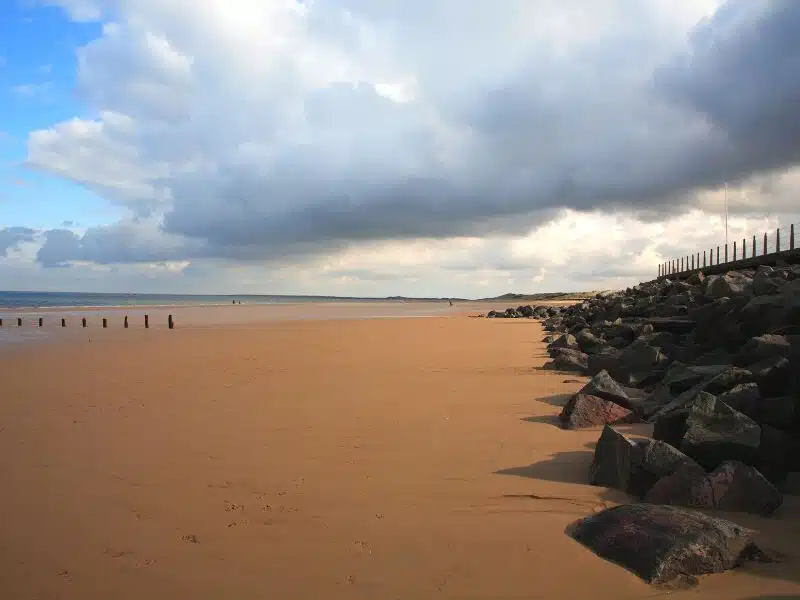
You might also enjoy…
- 21 of the Best Things To Do in Hunstanton and Old Hunstanton
- Wells-next-the-Sea Visitor Guide
- Holme Beach – Complete Visitor Guide
- Norfolk Nature Reserves – Ultimate A-Z Guide
- Norfolk Coast – 8 Amazing Ways to Explore
- 15 Norfolk Seaside Towns for Your Next Trip
- Burnham Market – All You Need to Know Before You Go
Kite Sports at Brancaster Beach
Kite surfing is a popular pastime at Brancaster beach, thanks to the wide expanse of hard, flat sand and the steady Norfolk winds.
The use of kites and buggies is restricted to certain zones to ensure visitor safety and enjoyment, and there is a map at the entrance to the beach, showing where it is safe to fly. You should follow the National Trust’s guidelines for kite sports on Brancaster beach at all times;
- To ensure the safety of swimmers and other beach users, kite surfers are asked to approach the beach with extreme caution and at a reduced speed. Swimmers and other water users take priority at all times.
- Please use the designated launch and landing area.
- Please keep clear of the channel buoys.
- When your kite is not in use please wind your lines up to maintain free access to other beach users.
- Due to strong tidal conditions, it is recommended that only experienced kite surfers use this area.
- When using the water at high tide keep clear of fishing nets set between the high and low water mark.
- Only fly power kites in the area indicated on the map on site.
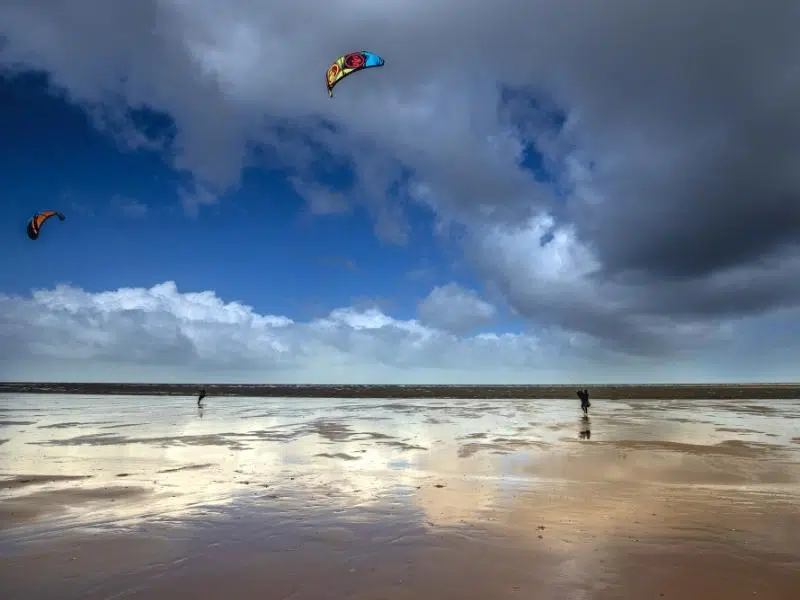
Seals at Brancaster Beach
Brancaster Beach in summer can be a good spot to see small groups of seals in the water as they swim west along the coast from Blakeney in search of food.
If you’re swimming here, you may well have a visit from a curious seal, popping up to check you out – don’t worry they won’t harm you.
Generally speaking, you’re unlikely to see a seal on the beach at Brancaster, they tend not to come ashore here as there is no established colony or breeding ground.
RELATED POST: Seals in Norfolk – Where & How to See Them
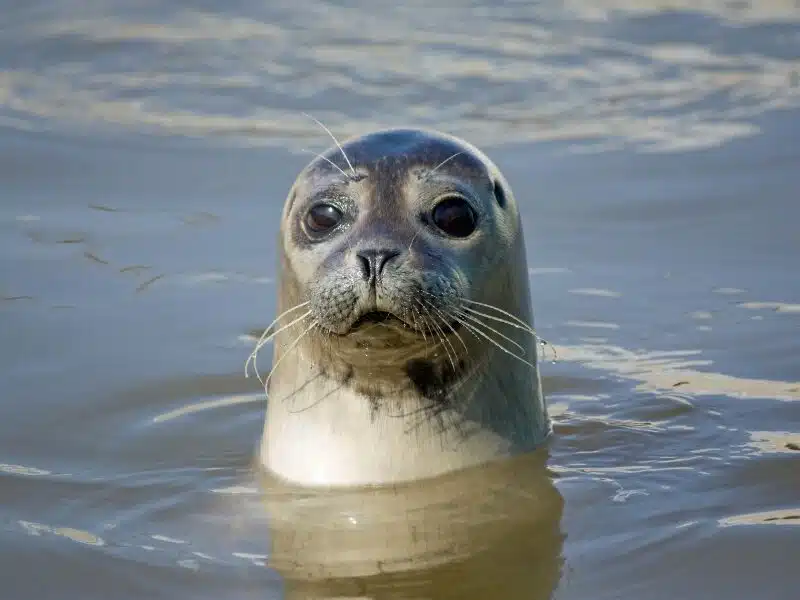
Norfolk Coast Path
The beautiful Norfolk Coast Path misses most of Brancaster beach, due to the nature of the marshes which sandwich the beach.
The path comes inland at Thornham to avoid the busy coast road, and meets Mill Road in Brancaster, before crossing the A149 into Broad Lane and continuing east on Butcher’s Drove, before becoming the coastal path once again.
It’s a delightful walk alongside the saltmarshes, past Branodunum Roman Fort and through pretty Brancaster Staithe harbour (a stop at the Crab Hut is a must!) and onto Burnham Deepdale.
From here, you can catch the Coastliner 36 bus back to Brancaster or continue on to Burnham Overy Staithe and Holkham.
RELATED POST: Walks in Norfolk – 14 of the Best Trails
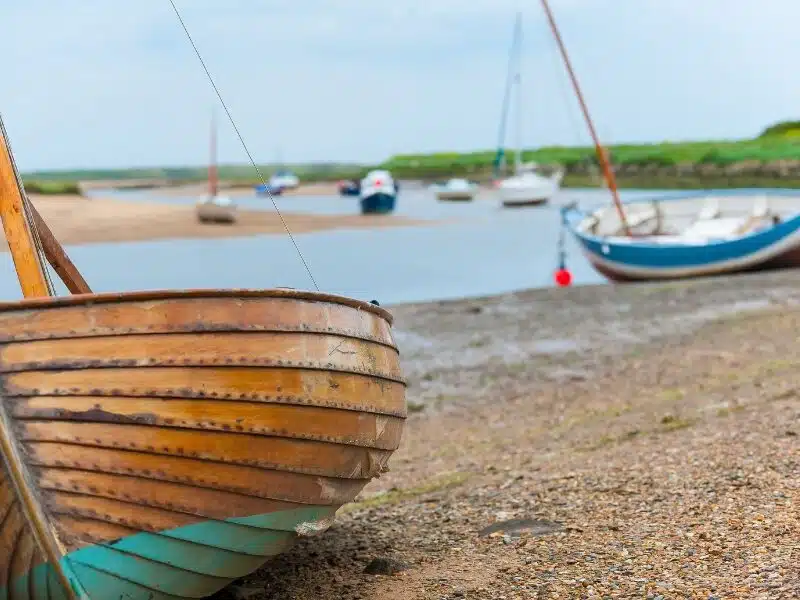
Horse Riding at Brancaster Beach
Brancaster is a beautiful spot for riding along the beach, with the sand revealed at low tide being the perfect consistency for a good ride.
Riding on the beach at weekends, on bank holidays and during school holidays between the hours of 9am and 6pm is not allowed between May to September.
D-Day Training at Brancaster Beach
Although no signs remain on the beach, it’s fascinating to think back on the historic role the beach played in World War Two.
In preparation for the Allied invasion of Normandy in 1944, the Ministry of Defence was on the lookout for a beach similar to those on the Normandy coast. Brancaster beach was found to be a good sand match and went on to play a vital role in preparing for the WWII landings, as the 79th Armoured Brigade came to Brancaster to practise landing tanks on the beach.
The beach also had its very own shipwreck. Partially buried in the sand, the remains of the SS Vina were used by the RAF for target practice in preparation for the Normandy D-Day landings before she accidentally sank in 1944 and became stranded on the sandbank, where she remained until being swept away in 2022.
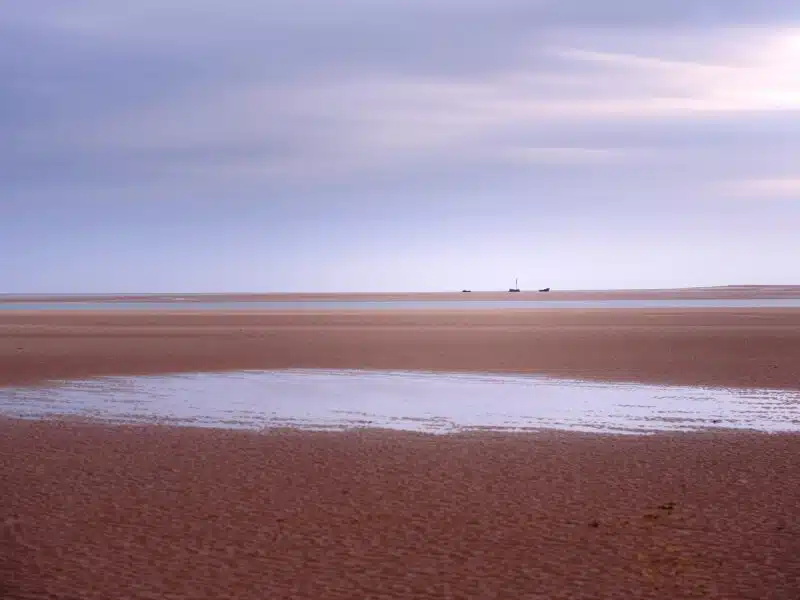
Food at Brancaster Beach
The nearest place to get food at the beach is Brancaster Beach Kiosk, opposite the car park. The kiosk is open between Easter and 1st November, serving hot and cold drinks, ice creams and food. You can get burgers, bacon butties, cheesy chips and lots of other tasty beach snacks to keep your energy up!
In Brancaster village, a mile from the beach, the dog-friendly Ship Hotel offers posh pub grub in their welcoming bar and restaurant, with a focus on locally produced ingredients, like Brancaster mussels, Cromer crab and traditional fish and chips.
Slightly further afield is the fabulous Crab Hut, which perches on Harbour Way in Brancaster Staithe and serves freshly caught seafood with aplomb!
Also in Brancaster Staithe is The White Horse, who are passionate about seasonality and the provenance of their ingredients, and the Jolly Sailors pub, an award-winning inn, which serves Norfolk’s finest ales from Woodforde’s and Brancaster Brewery, in a family-friendly environment.
RELATED POST: 26 Norfolk Food & Drink You Must Try!
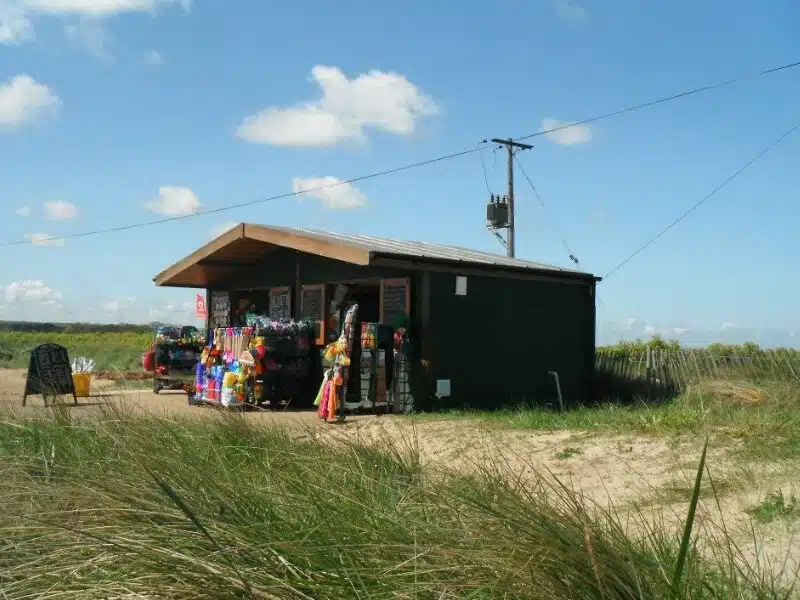
Where to Stay at Brancaster Beach
In Brancaster village, The Ship Hotel has nine gorgeous pet-friendly rooms, decorated in muted colours which reflect its coastal surroundings. With original features like oak beams and exposed brick, these rooms are traditional yet contemporary.
In Brancaster Staithe is The White Horse, a local village pub with rooms which are beautifully designed with their own terraces and sedum roofs that blend with the marshland beyond.
In nearby Thornham is my favourite, The Lifeboat Inn, and the beautiful Titchewell Manor Hotel. Both hotels offer modern accommodation and have excellent restaurants to enjoy local Norfolk fayre.
There are lots of holiday cottages and Airbnb style holiday rentals in and around Brancaster. From one bed cottages to huge converted barns, use VRBO to search for the best deals and find availability on Brancaster holiday accommodation.
RELATED POST: Norfolk Glamping – 15 of the Best Spots | The Ten Best Campsites in Norfolk
Do you love Brancaster beach as much as I do? Tell us about your visit there in the comments!
Love it? Pin it!
